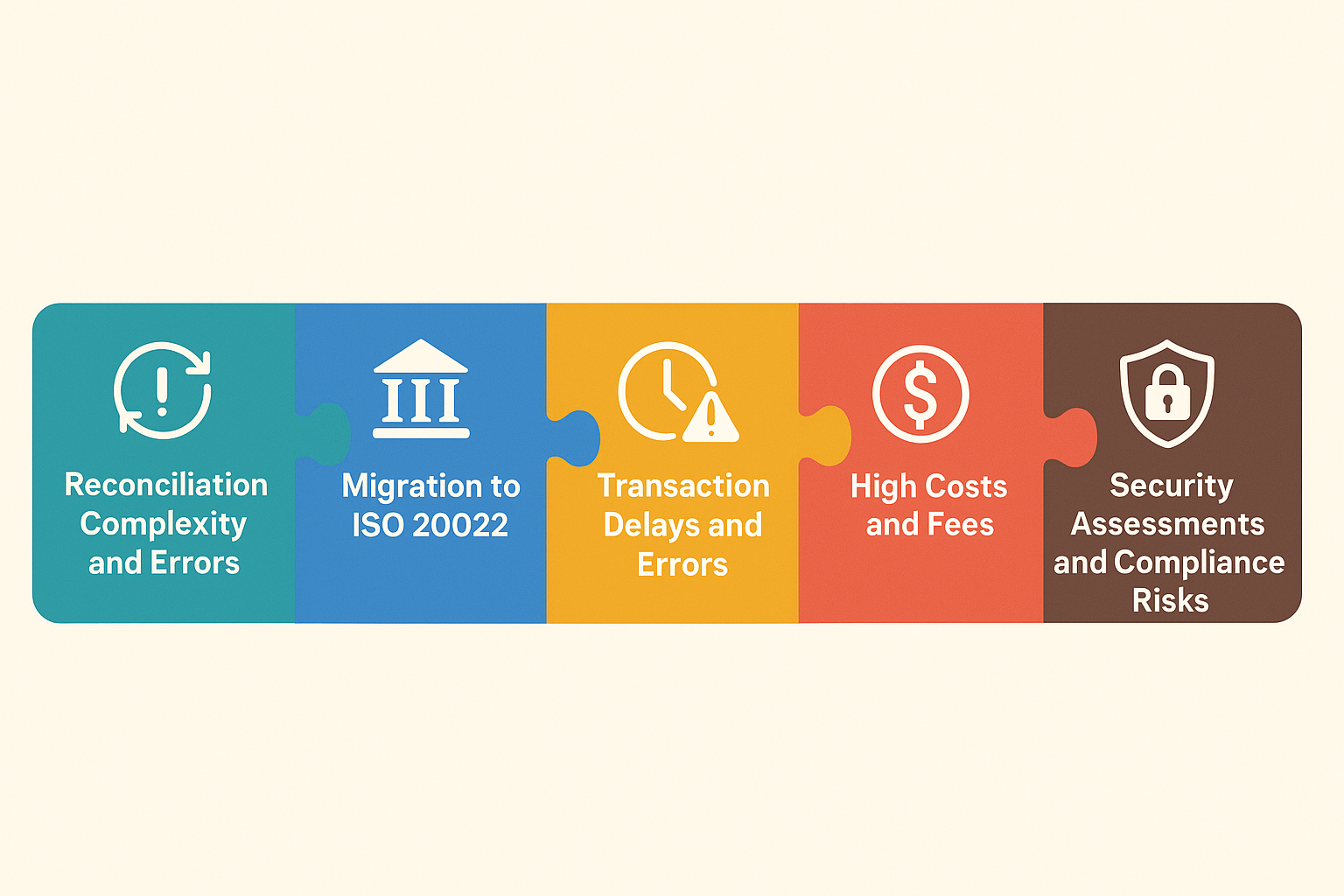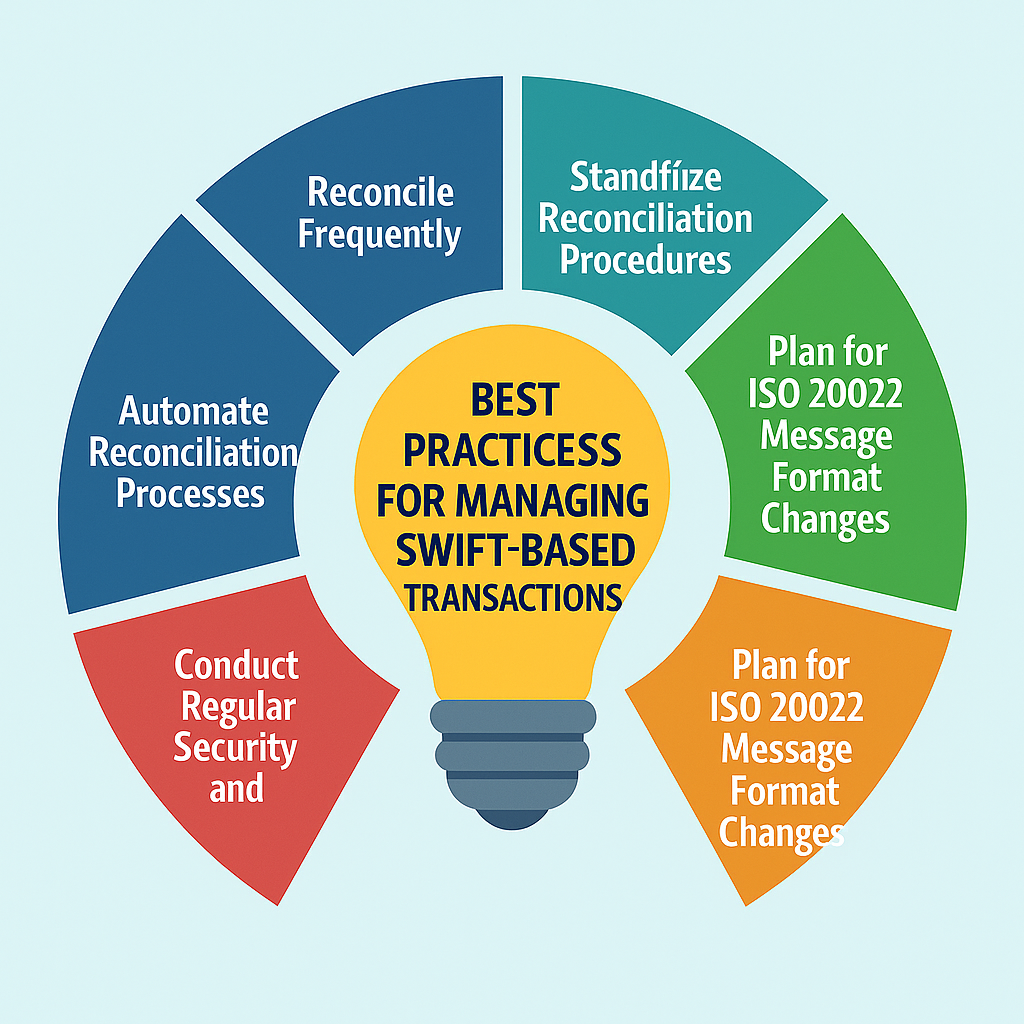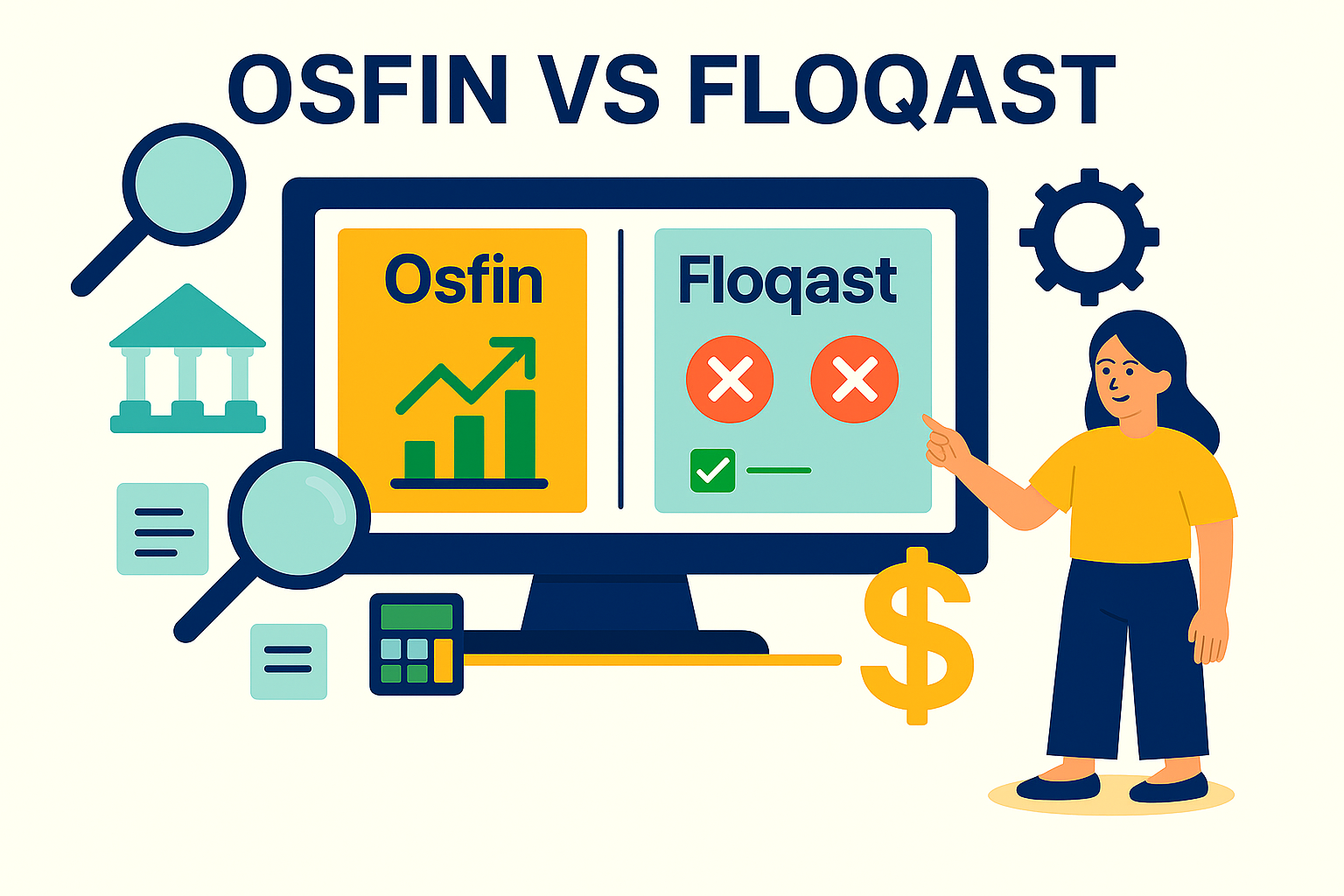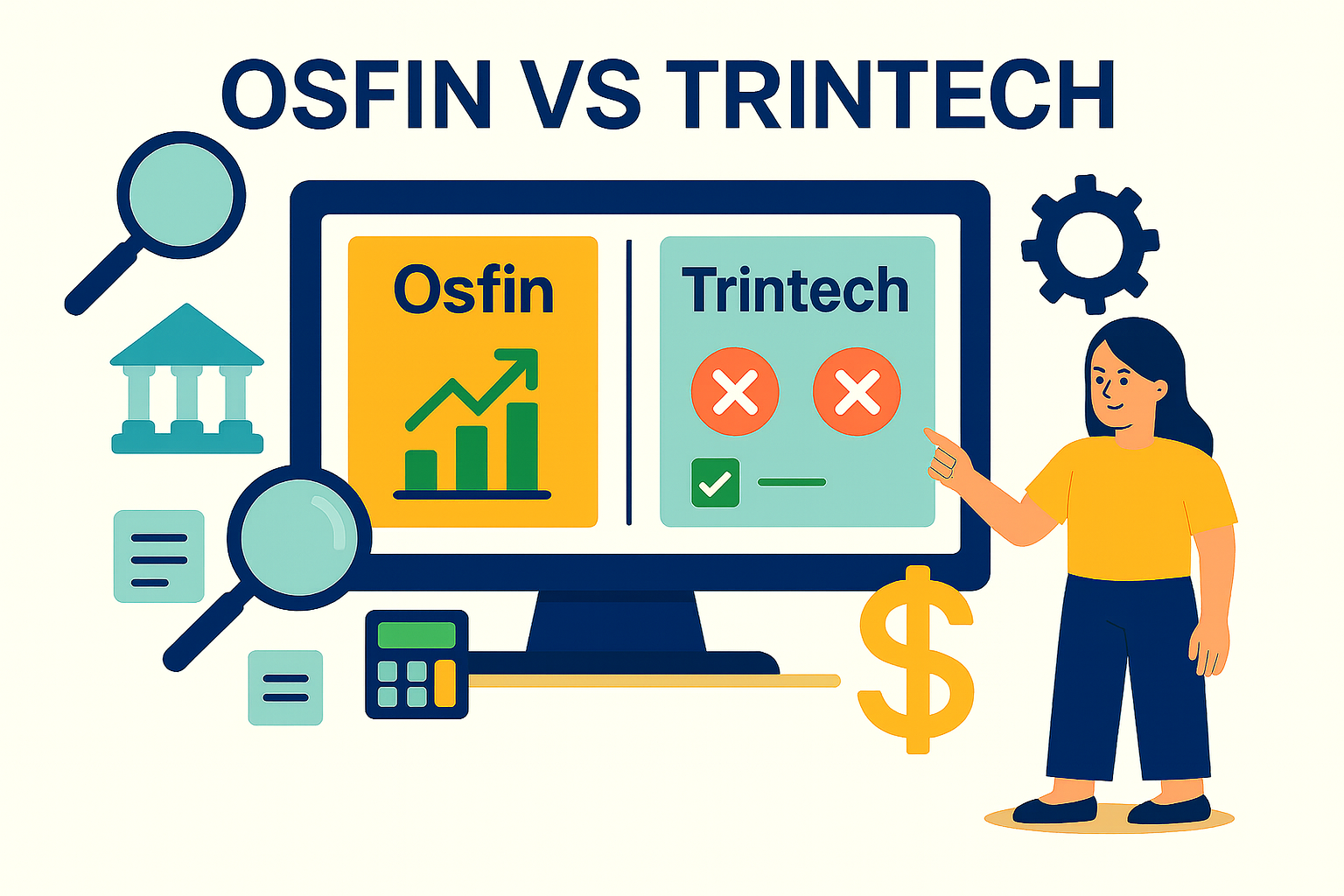SWIFT Banking Explained: How Global Transfers Work
Every time money crosses borders, it involves more than just the transfer of funds from one end to the other. The transaction must navigate a complex network of correspondent banks, regulatory checks, currency conversions, and messaging protocols with SWIFT at the heart of it all, ensuring that each instruction is securely and accurately communicated across the globe.
A recent Statista report confirms that the number of SWIFT payments processed daily reached approximately 50 million messages in 2022. While the data reinforces the importance of SWIFT in daily cross-border transactions, it also raises a significant challenge.
At this scale, even a tiny error or delay can cause negative repercussions in the global financial system, raising the need for proper reconciliation. In the absence of an efficient reconciliation system, your financial institution can easily get tangled in compliance risks, operational headaches, and reputational damage.
This makes it essential to understand the intricacies of the SWIFT payment network and why reconciliation is vital. In this article, we’ll explore the meaning of SWIFT in banking, what does SWIFT do, what is a SWIFT message, how SWIFT works, and how reconciliation of transactions made through SWIFT can be simplified.
What this blog covers:
- What SWIFT banking is and how the SWIFT network facilitates global transfers
- Key components: SWIFT messages, codes, correspondent banks, settlement flows
- Differences between SWIFT and other payment rails (ACH, wire, SEPA)
- Common challenges in SWIFT transfers: cost, delays, complexity, reconciliation
- Best practices for handling SWIFT payments and maintaining compliance
- How Osfin supports SWIFT reconciliation and automation
What is SWIFT in Banking?
SWIFT stands for Society for Worldwide Interbank Financial Telecommunications. It is a network of financial institutions that facilitates transfer of funds between different banks at a global scale. Founded in 1973, the SWIFT banking system offered a convenient alternative to Telex, a communication system replete with issues like slow processing times and unsafe and error-prone operations.
Currently, SWIFT is a network of over 11,500 financial institutions located in more than 200 countries. It’s a member-owned cooperative that is controlled by its shareholder financial institutions from different countries. Its primary objective is to let banks and financial institutions securely communicate payment instructions and transaction details with each other across international borders.
An important thing to note is that the SWIFT system itself doesn’t transfer any funds, it just works as a messaging system that transmits essential information related to a transaction.
What Does SWIFT Do in the Financial System?
In a financial system, SWIFT acts as an intermediary between banks and financial institutions that allows secure transfer of standardized instructions for international payments, securities, treasury transactions, and trade finances.
The SWIFT financial system does not move money itself; instead, it transmits payment orders, transaction details, and settlement instructions between accounts held by correspondent banks.
Key functions of SWIFT in the financial system include:
- Secure, standardized, and efficient communication for international fund transfers.
- Enabling access to applications that provide services like instruction matching and processing, clearing, and settling payment instructions.
- Offering dashboards that help in real-time processing and monitoring of transactional messages.
- Establishing a standard format so banks in different countries can understand each other’s transaction details without confusion.
- Providing reporting utilities for KYC and AML checks.
- Ensuring global accessibility and accountability, with encrypted messaging and universal reach.
These functions are overseen by the central banks of the G10 countries, the European Central Bank, and the National Bank of Belgium.
How Does the SWIFT System Work?
SWIFT codes play a major role in SWIFT payment systems. These codes have 8 or 11 characters and work as unique identifiers of financial institutions. The SWIFT network assigns a specific code to each financial institution.
The code usually looks like this: CHASUS33NYC. Here,
- The first four characters represent the financial institution itself.
- The fifth and sixth characters are for the country where the institution is located.
- The seventh and eighth characters denote the city code of the institution.
- The final ninth, tenth, and eleventh characters are optional. They typically represent individual branches of banking institutions.
Here’s how a typical SWIFT transfer works:
1. Code Assignment: Each financial institution in SWIFT receives a unique SWIFT code, which identifies the bank, country, city, and branch.
2. Secure Messaging: Member SWIFT banks send encrypted payment instructions through the SWIFT network using these codes to direct transactions to the correct recipient institution.
3. Payment Flow: For a SWIFT transaction, the sending bank uses the recipient’s SWIFT code and account details to transmit a payment instruction. If a direct relationship doesn’t exist between the two banks, an intermediary or correspondent bank can route the message and facilitate settlement.
4. Settlement: Once a secure SWIFT message is received, the recipient bank uses the details to credit the appropriate account. The actual movement of money happens through established interbank accounts such as Nostro/Vostro and not directly by SWIFT.
5. Standardization: SWIFT maintains strict message formats and syntax, which ensures compatible and error-free communication across the whole system.
6. Transfer and Settlement Time: Most SWIFT payments reach recipient banks within an hour, and nearly all are credited to end beneficiaries within 1-5 business days, depending on routing and intermediary banks involved.
{{banner3.1}}
Types of SWIFT Messages
SWIFT messages are standardized and secured electronic messages that are divided into key categories based on the purpose and type of transaction. Some of the examples are included in the table:
The transition to MX messaging is also underway for richer, data-driven compliance and global interoperability. MX messages are XML-based and follow the ISO 20022 standard, which is used for richer data and advanced compliance needs. It will slowly replace the older MT messaging standard.
SWIFT vs Other Payment Networks
SWIFT payment networks often face competition with other payment networks, such as ACH, BACS, UPI, SEPA, etc., based on their scope, speed, cost, and purpose. Let’s have a look at how these payment networks differ from SWIFT.
Challenges with SWIFT Transactions

SWIFT is no doubt valued for its global reach, standardized messaging format, and reliability in connecting multiple financial institutions worldwide, but it’s not without its challenges.
Complex reconciliation, slower transaction speeds, high costs, limited transparency, security vulnerabilities at endpoints, and exposure to geopolitical or regulatory restrictions are issues that financial institutions find hard to navigate. Let’s have a detailed look at these challenges.
1. Reconciliation Complexity and Errors
Reconciliation of SWIFT payments involves matching internal transaction records with bank statements and Nostro/Vostro accounts. The transition from legacy SWIFT MT messages to the newer ISO 20022 MX format introduces more complex and richer data, which can overwhelm outdated reconciliation systems.
2. Migration to ISO 20022
Migration to ISO 20022 refers to the transition of financial messaging standards from the old SWIFT MT (Message Type) formats to the new MX (ISO 20022 XML-based) formats. While ISO 20022 offers richer, structured data and greater transparency that improves compliance and reconciliation, the migration phase creates challenges.
Institutions must coordinate technology updates, mapping of old MT messages to new MX formats, and avoid disruptions or errors during coexistence of old and new systems. Failure to migrate smoothly could disrupt international transaction flows.
3. Reconciliation Workflow Reset
For teams that still rely on manual reconciliation, ISO 20022 migration creates an even bigger hurdle. Existing workflows designed for MT messages won’t work with the richer MX formats, meaning reconciliation processes will often need to be redesigned from scratch.
4. Transaction Delays and Errors
Mistakes such as incorrect or missing SWIFT codes can cause misrouting of payments, transaction rejections, delays that can sometimes last days or weeks, and additional fees. Plus, retrieving misrouted funds can be costly and legally complicated.
5. High Costs and Fees
Cross-border SWIFT payments often involve multiple correspondent banks, which increases transaction fees. The migration and modernization efforts can also add cost burdens on banks.
6. Security Assessments and Compliance Risks
Institutions participating in SWIFT undergo stringent security evaluations to prevent fraud and ensure system integrity, requiring continuous investment in cybersecurity.
CTA: Unify your reconciliation, compliance, and reporting in one secure, automated platform -Osfin. Book a demo now.
Best Practices for Managing SWIFT-Based Transactions

Best practices for managing SWIFT-based transactions focus strongly on automation, frequent reconciliation, standardization, error handling, and integration with other financial systems. These best practices are as follows:
1. Automate Reconciliation Processes
Leverage reconciliation software like Osfin that automatically matches SWIFT transaction messages with internal records using rule-based algorithms. Automation drastically reduces manual errors and speeds up the reconciliation of SWIFT messages.
2. Reconcile Frequently
Performing reconciliations daily for high-volume SWIFT accounts allows faster detection and resolution of discrepancies, improving real-time cash visibility, and reducing month-end surprises.
3. Standardize Reconciliation Procedures
Establish clear, documented reconciliation workflows including steps to retrieve SWIFT statement messages, criteria for matching transactions, and escalation protocols. This consistency prevents overlooked errors and accelerates resolution.
4. Handle Exceptions Efficiently
Use software that categorizes and flags exceptions, e.g., mismatched amounts or missing references, for quick investigation. Automated reconciliation should smoothly manage common issues like partial payments, differences in invoice numbers, or duplicate transactions.
5. Integrate Reconciliation with ERP and Banking Systems
Ensure your reconciliation solution seamlessly connects with bank feeds, SWIFT messaging platforms, ERP systems, and general ledgers. Smooth integration enables real-time transaction data flow, automatic posting of reconciled entries, and unified financial reporting.
6. Plan for ISO 20022 Message Format Changes
With SWIFT transitioning to richer ISO 20022 MX messages, update your systems to parse and reconcile these new formats alongside legacy MT messages during the migration period, so your processing is uninterrupted.
7. Conduct Regular Security and Compliance Reviews
Given SWIFT’s critical role in financial messaging, make sure you maintain rigorous control over message authentication, access permissions, and compliance with regulatory obligations. Your reconciliation systems should support audit trails and proper notification handling.
How Osfin Supports SWIFT Transaction Reconciliation?
Osfin is a secure and reliable enterprise-grade reconciliation software that is purpose-built to handle the complexity of SWIFT-based transactions. It ensures you’re not only aware of industry best practices we just looked at but fully equipped to implement them with precision and efficiency. Here’s what Osfin helps you with:
- With advanced automation, Osfin matches SWIFT MT and ISO 20022 MX messages against internal records in seconds, using intelligent rule-based algorithms that continuously learn.
- As a file-format-agnostic platform with over 170+ pre-built integrations, it allows real-time integration with ERP, core banking systems, and SWIFT messaging platforms so that transaction data flows seamlessly across your financial ecosystem.
- The platform ingests massive volumes of financial data in different formats, including MT940, ISO 20022, BAI2, XML, CSV, JSON, or ACH, from multiple sources in real-time, normalizes it, and prepares it for reconciliation. This ensures clean, structured data enters your workflows without delays or quality issues.
- It also applies custom deviation tolerances during ingestion to filter out poor-quality data before it enters your reconciliation workflow.
- Osfin’s logic-based matching engine handles complex scenarios, including many-to-one and one-to-many transaction relationships. It can reconcile up to 30 million records in just 15 minutes with 100% accuracy, delivering unmatched processing speed.
- Osfin’s exception management engine automatically categorizes issues. The platform flags them with accurate reason codes, then escalates and routes them to the right team member for resolution.
- Live dashboards provide real-time visibility into match status, exposure, and exception queues, empowering decision-makers to act quickly and confidently.
- Once reconciliation is complete, Osfin generates detailed compliance reports and maintains full audit-ready workflows with complete traceability and transaction history.
- Using 256-bit encryption, role-based access controls, and two-factor authentication, while complying with SOC 2, PCI DSS, ISO 27001, and GDPR standards, Osfin keeps data security and regulatory compliance always at the forefront.
- As SWIFT transitions to richer ISO 20022 MX messages, Osfin is built to process both MX and legacy MT formats side-by-side, ensuring uninterrupted operations during the migration period.
{{banner1}}
Why Does SWIFT Still Matter in Modern Banking?
With so many faster payment networks and feature-rich fintech solutions available, you may wonder why stick with SWIFT even after 51 years of its inception? The reason is its ability to evolve. Since it was founded in 1973, SWIFT has transformed from a simple messaging system into a sophisticated, future-ready network.
It now powers near-instant payments, end-to-end tracking, transparency, and efficiency through SWIFT GPI. It has also adopted the modern ISO 20022 XML format for richer data, and is integrating with blockchain, APIs, and even AI-driven solutions.
Final Thoughts
Far from being outdated, SWIFT has continually adapted to changing financial landscapes, making it indispensable to modern global banking. It is because of its adaptability that more than 11,500 financial institutions continue to trust SWIFT and are confident in its ability to keep evolving to deliver secure, efficient, and globally connected payments in the decades to come.
As the payment system continues to evolve, Osfin’s advanced reconciliation capabilities ensure that every SWIFT transaction is matched with precision, exceptions are resolved swiftly, and compliance is never compromised, keeping your operations future-ready, just like the network you rely on.
{{banner1.1}}
FAQs on SWIFT Banking
1. What is the SWIFT payment system?
SWIFT is a messaging network of financial institutions from all over the globe that facilitates transfer of payment instructions between financial institutions and banks. It doesn’t involve actual transfer of funds and only allows transfer of messages related to a transaction.
2. Who owns the SWIFT banking system?
The SWIFT banking system is not owned by a single entity. It operates as a member-owned cooperative with over 3,500 financial institutions worldwide as shareholders who collectively own and govern the organization through their representatives elected as Board of Directors.
3. What type of organizations and financial institutions are members of SWIFT?
SWIFT processing is used by a wide range of institutions and organizations, including:
- Banks
- Non-bank financial institutions
- Foreign exchanges
- Clearing systems
- Asset management companies
- Corporate businesses
- Brokerage institutes and trading houses
- Securities dealers
4. How long does a typical SWIFT payment take?
Most SWIFT payments reach recipient banks within an hour. However, final crediting of SWIFT deposits to the beneficiary account can take 1-3 business days, especially if intermediary banks are involved.


